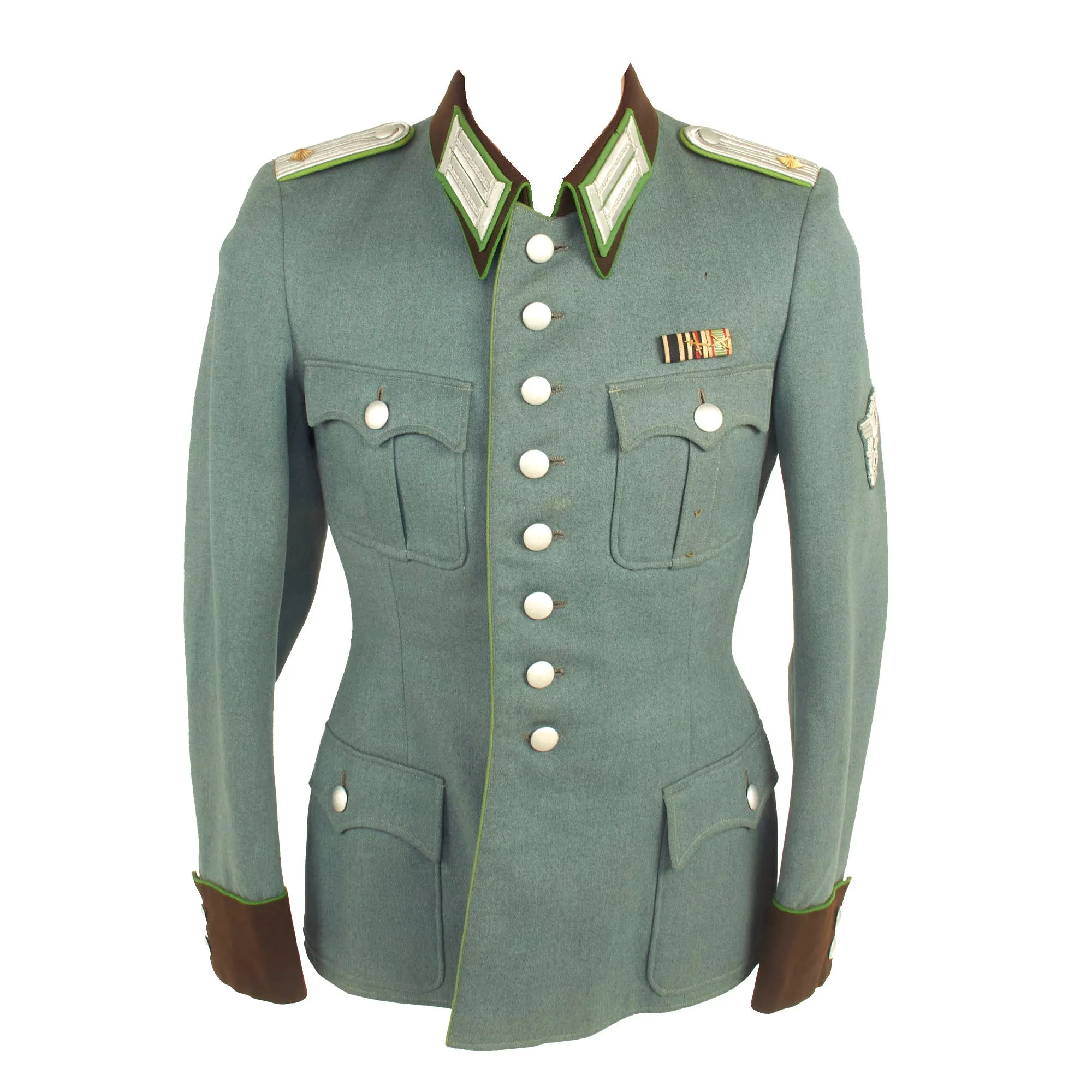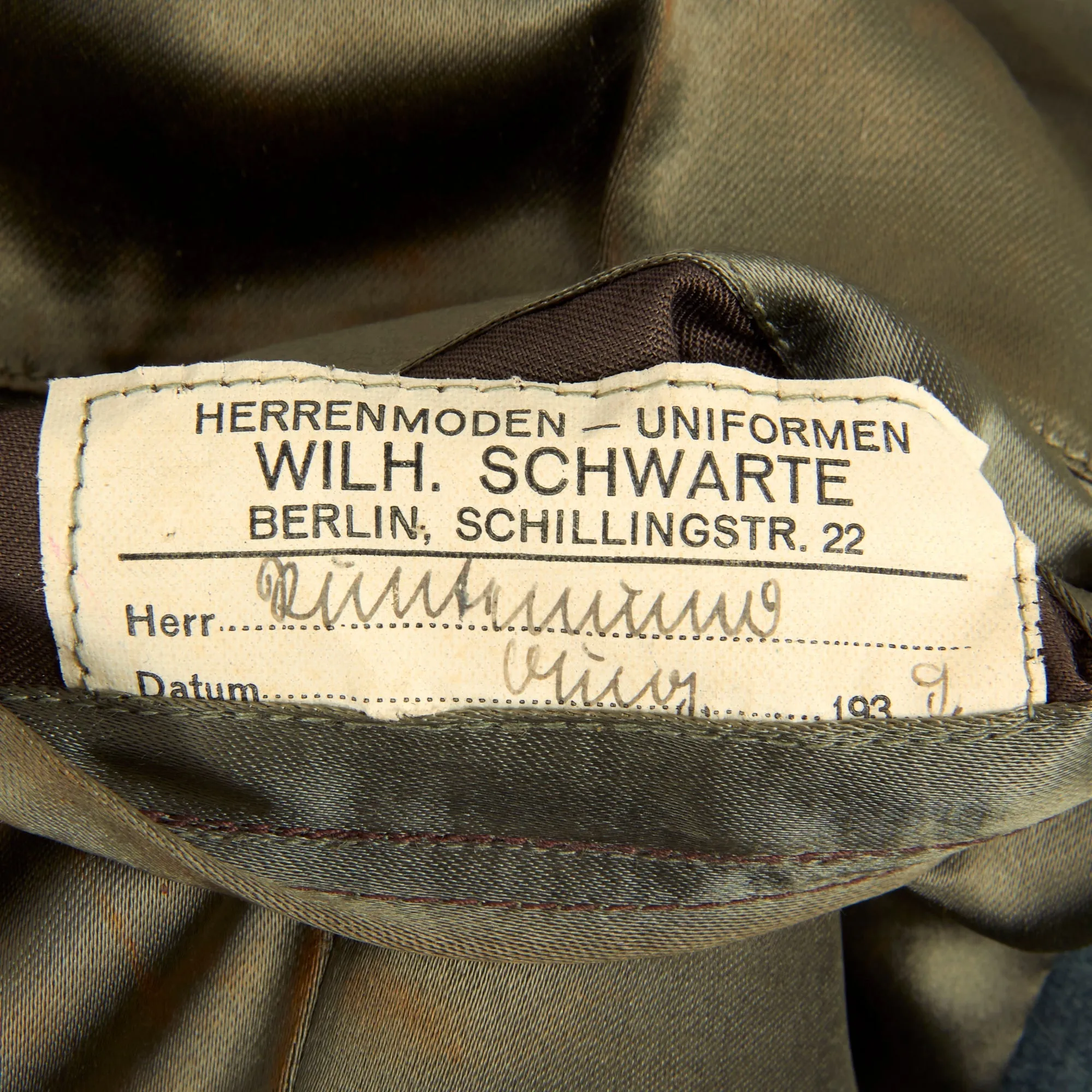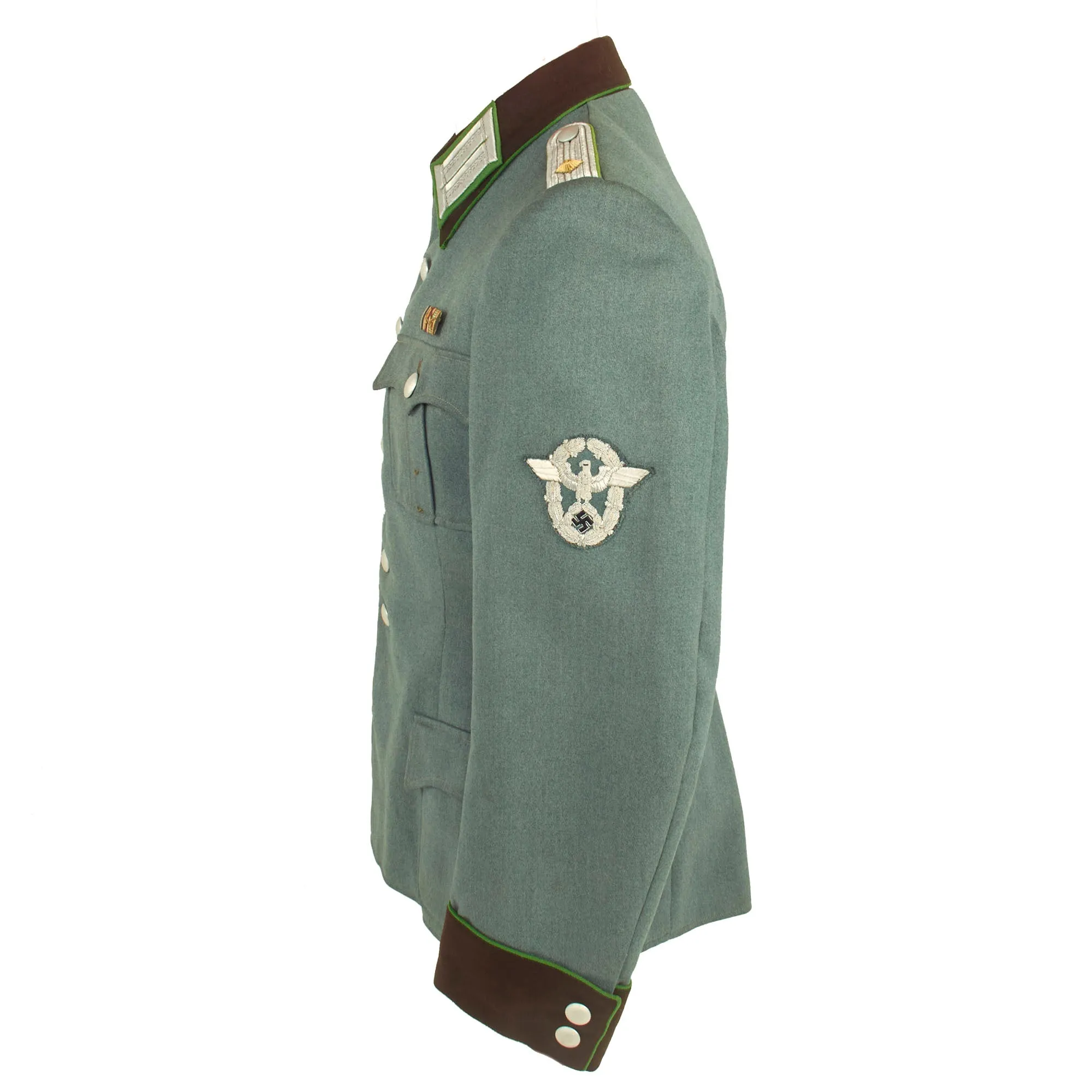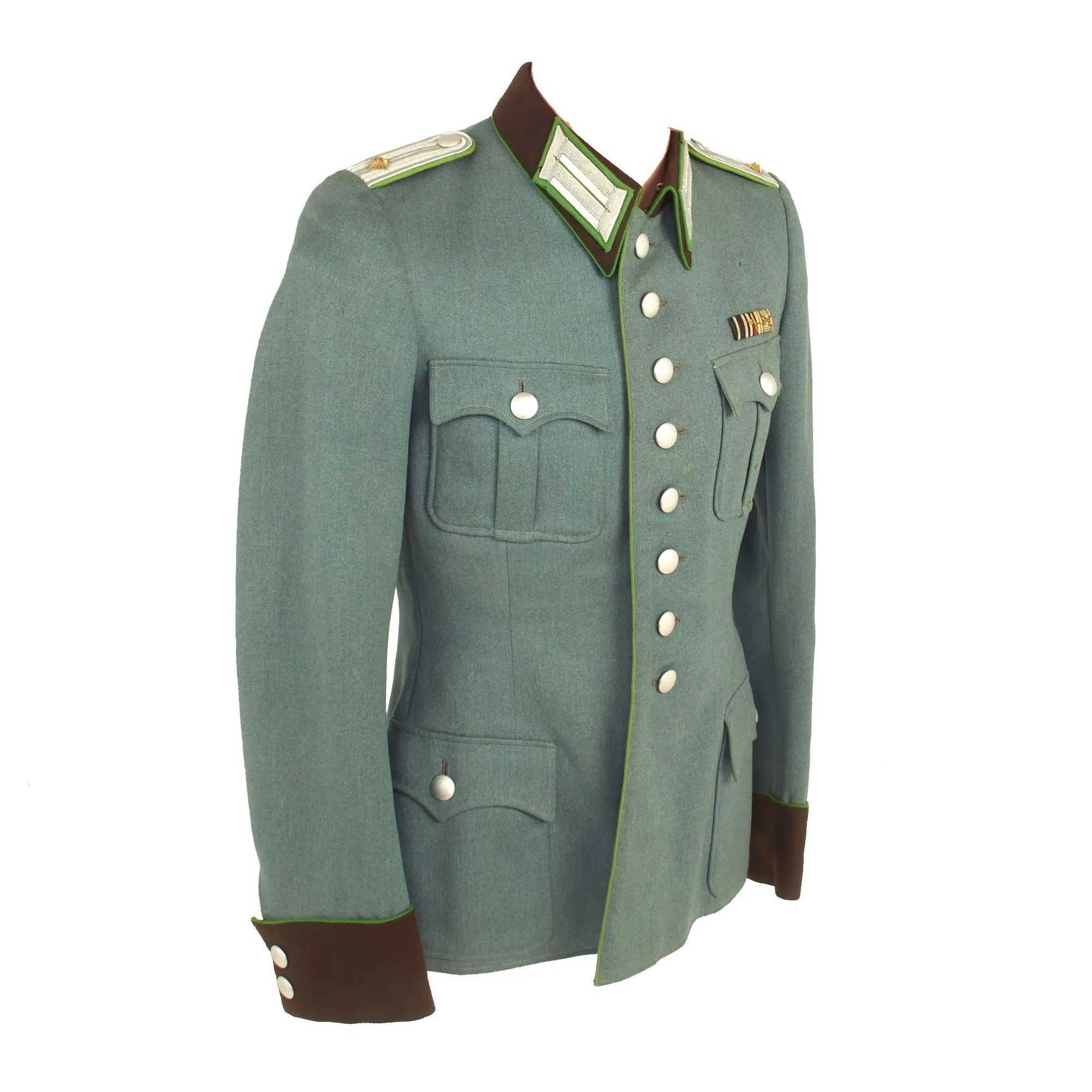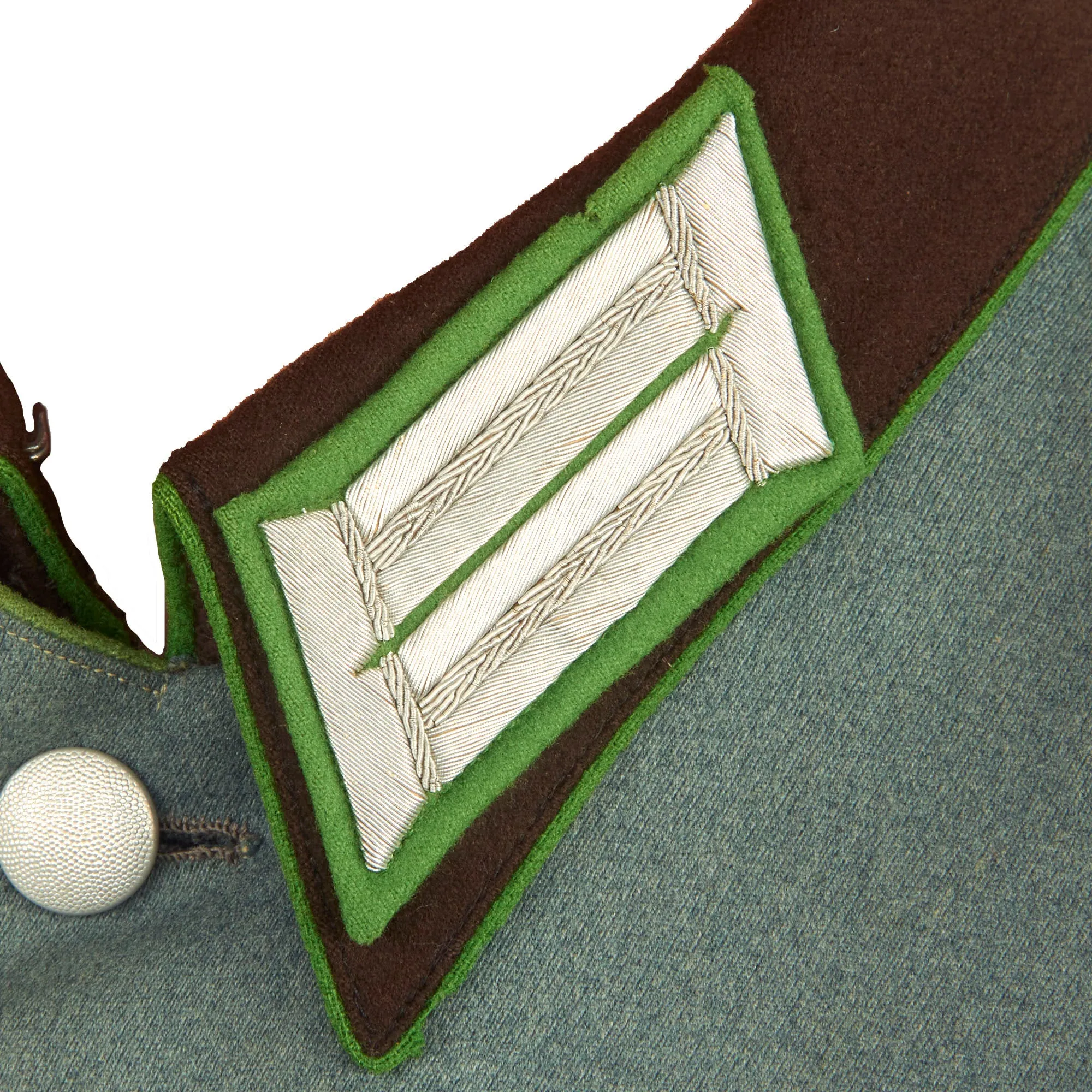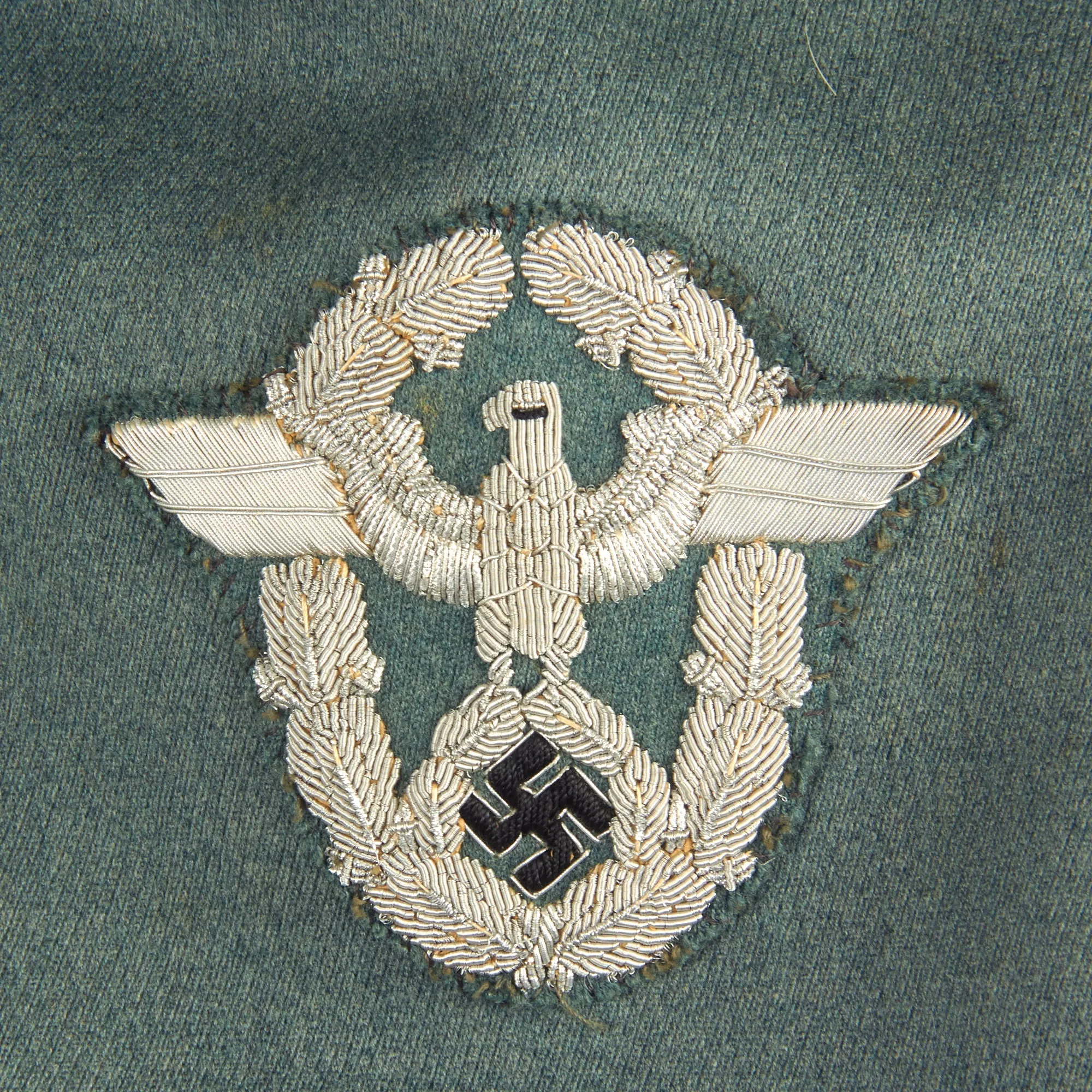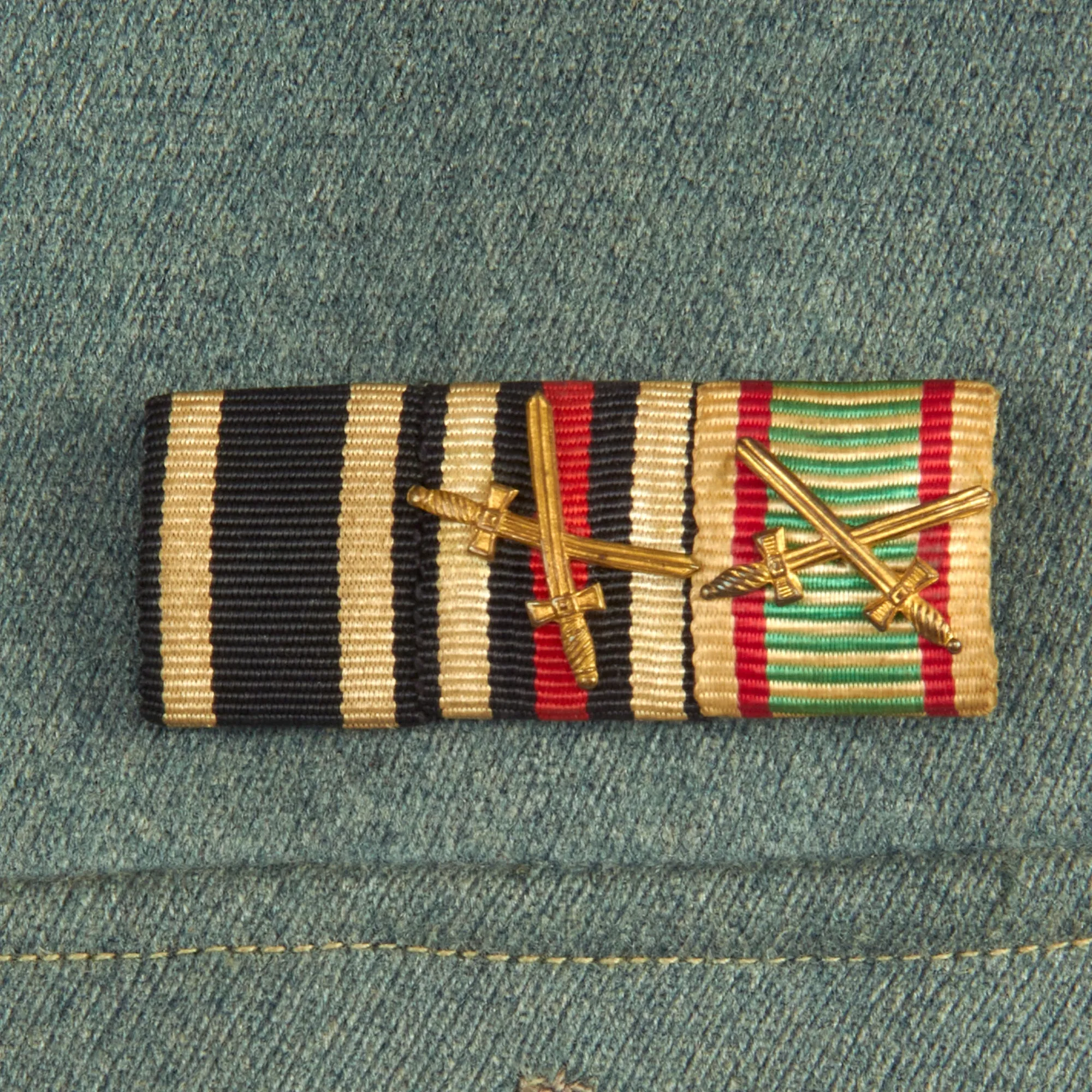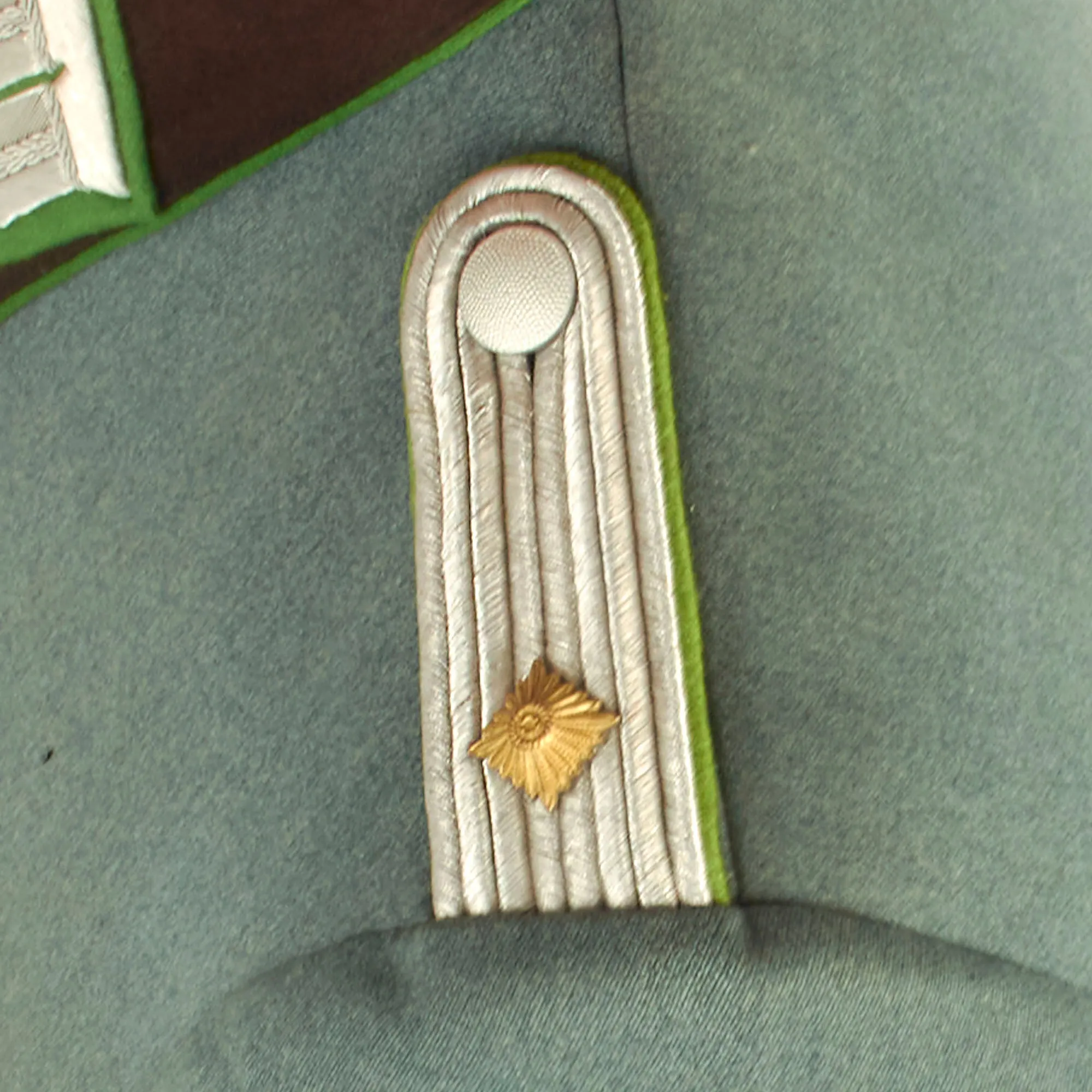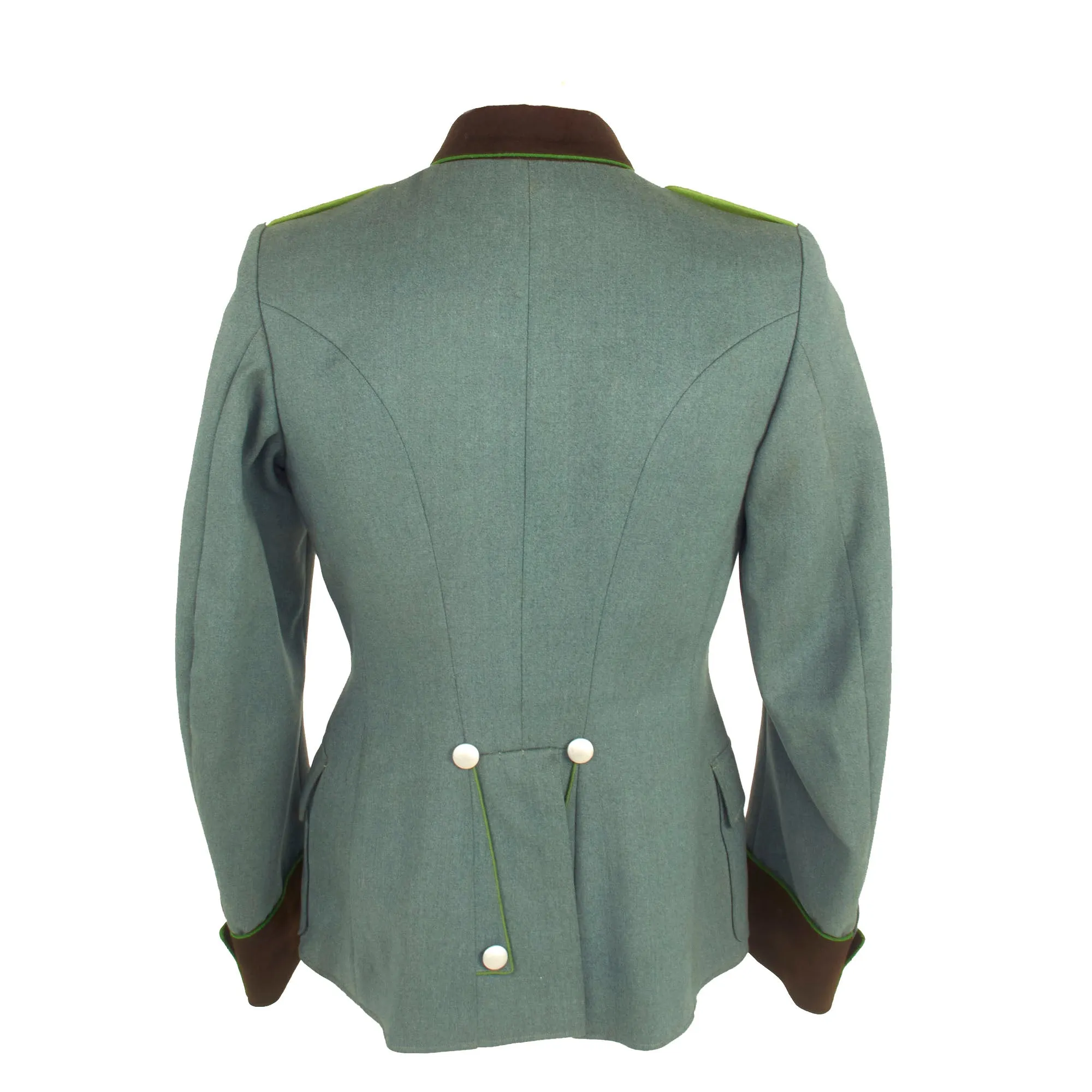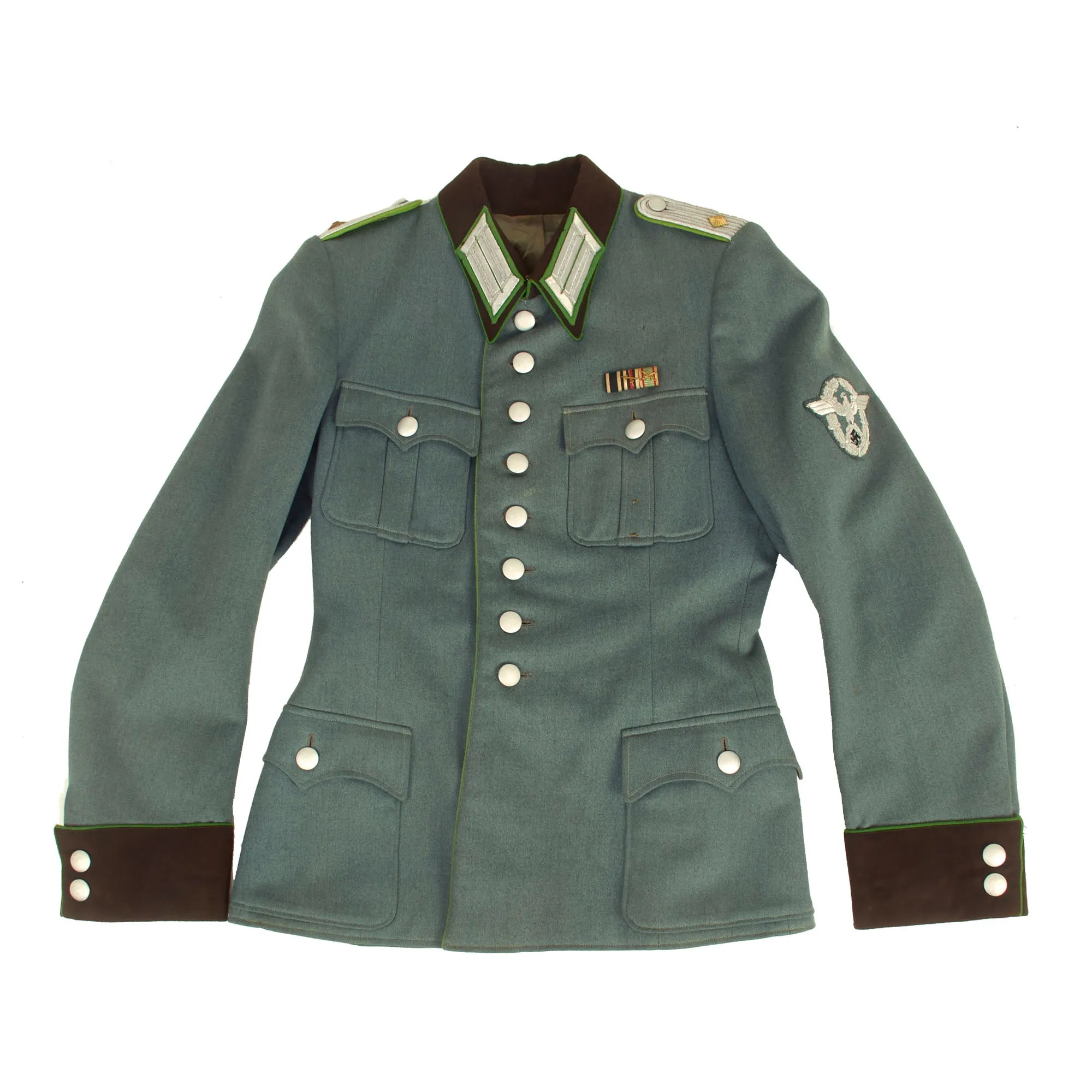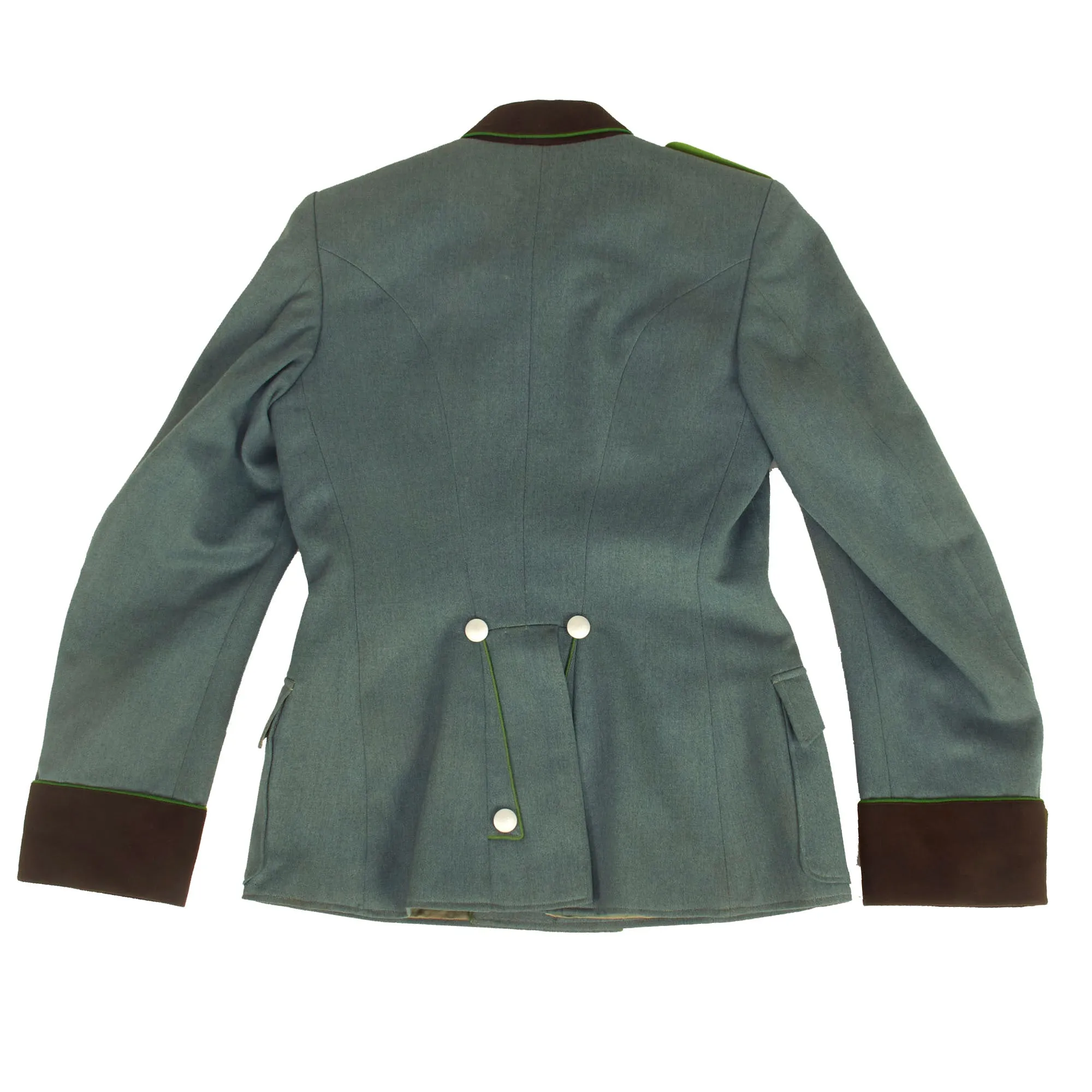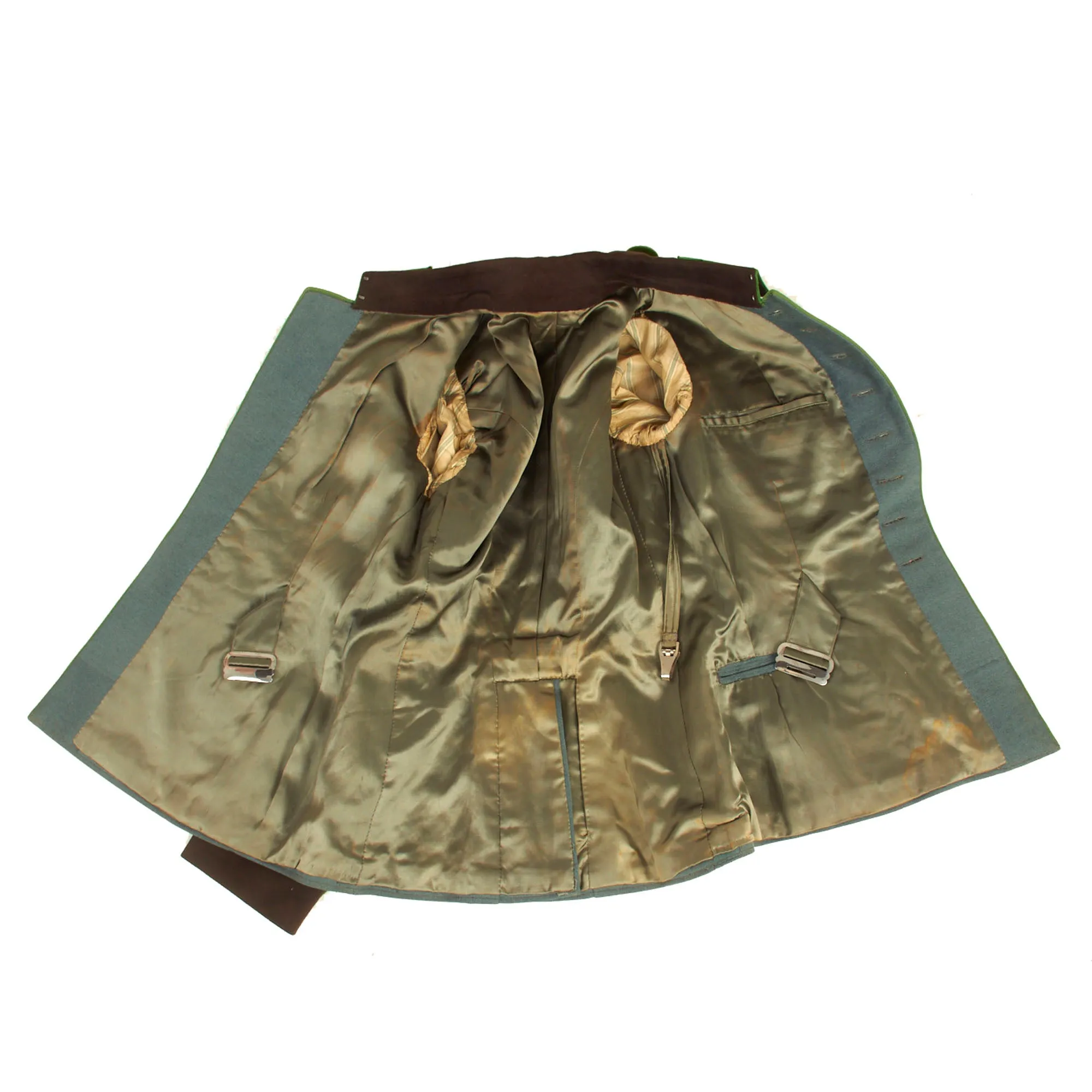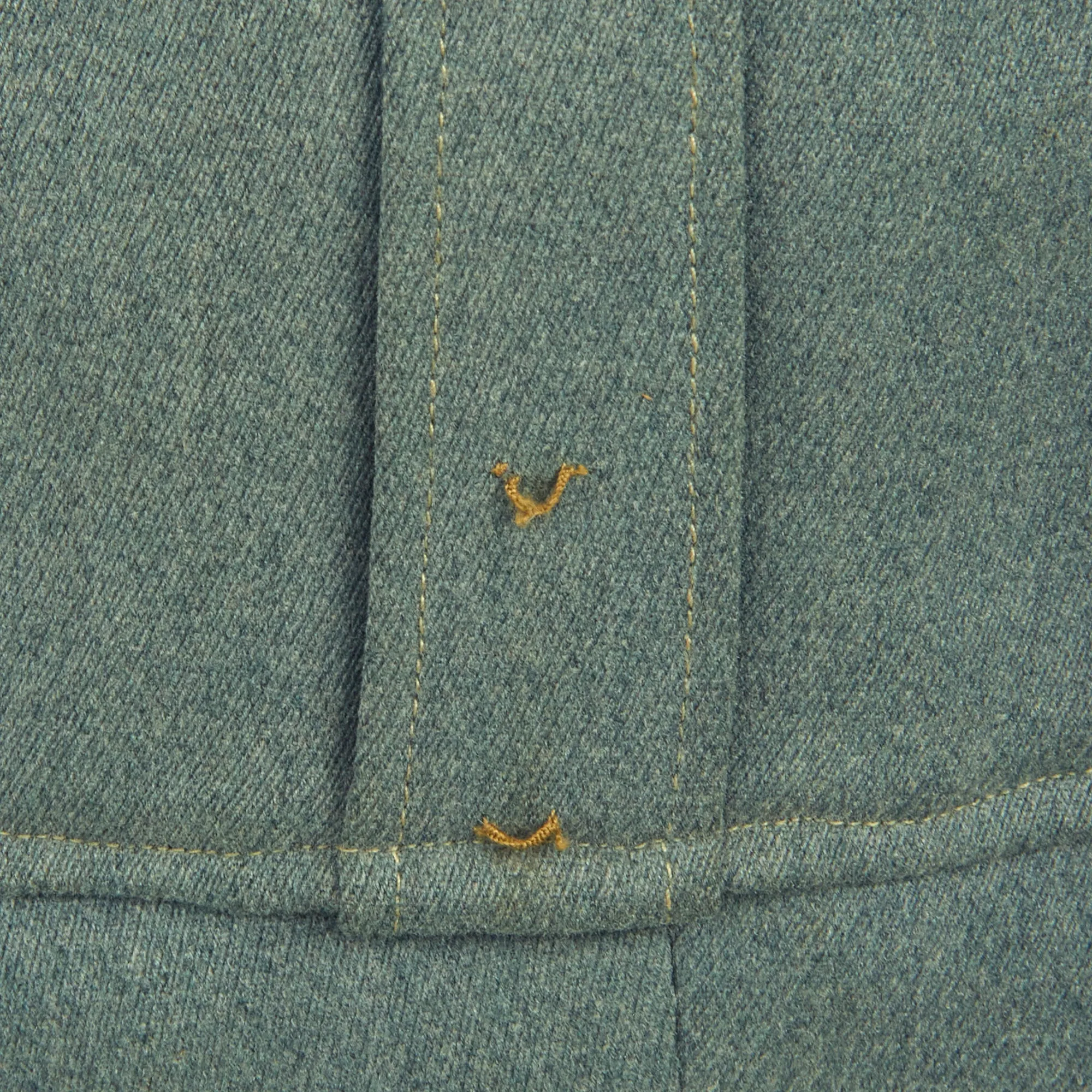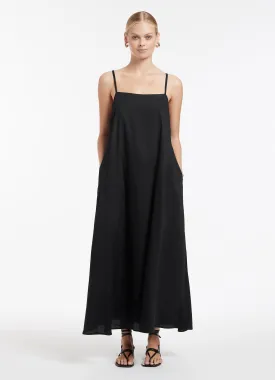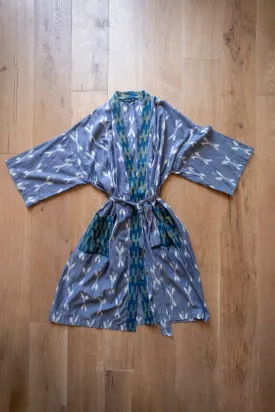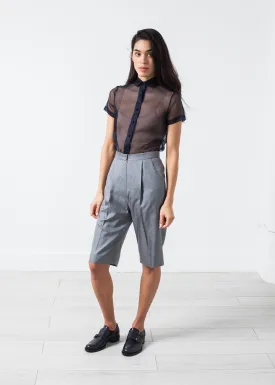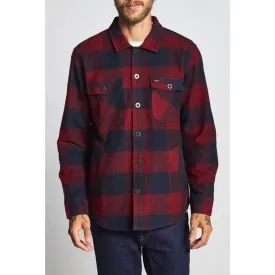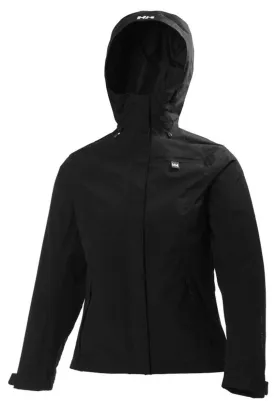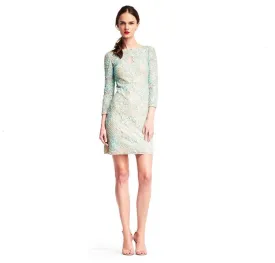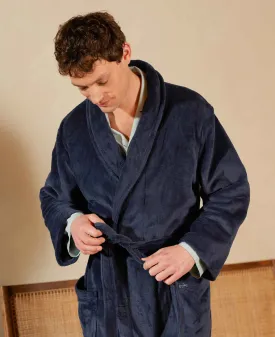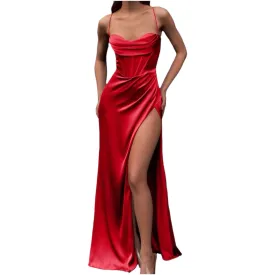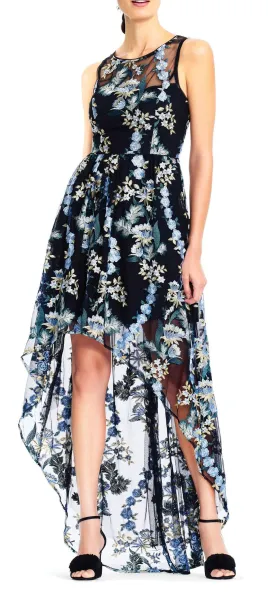Original Item: Only One Available. The Ordnungspolizei, abbreviated Orpo, meaning "Order Police", were the uniformed police force in NSDAP Germany from 1936 to 1945. The Orpo organization was absorbed into the NSDAP monopoly on power after regional police jurisdiction was removed in favor of the central government ("Reich-ification", Verreichlichung, of the police). The Orpo was controlled, nominally by the Interior Ministry but its executive functions rested with the leadership of the SS until the end of World War II. Owing to their green uniforms, Orpo were also referred to as Grüne Polizei (green police). The force was first established as a centralized organization uniting the municipal, city, and rural uniformed police that had been organized on a state-by-state basis.
The Schutzpolizei des Reiches or the Schupo was the state (Reich) protection police of NSDAP Germany and a branch of the Ordnungspolizei. Schutzpolizei is the German name for a uniformed police force. The Schutzpolizei des Reiches was the uniformed police of most cities and large towns.
State police departments were in charge of protection police, criminal investigation divisions (Kripo, short for Kriminalpolizei), and administrative police. The state protection police comprised a patrol branch, barracked police, traffic police, water police, mounted police, police communications units, and police aviation. Policemen had to have previous military service, good physical and mental health, be of Aryan descent, be members of the NSDAP and also members of the SS. Policemen were promoted according to a regulated career system. Promotion for officers was determined by merit and seniority. Pay for policemen was higher than the average industrial worker and was more in line with the average privately employed white-collar worker.
This Schutzpolizei M-36 tunic is made of fine quality police-green wool gabardine twill, and in form is more or less identical to the Army Heer tunic except for the colors used. There is no maker tag at the rear, but there is one inside of the inner pocket, which is marked:
HERRENMODEN - UNIFORMEN
WILH. SCHWARTE
Herr ???????
Datum März 193 9
It is named but unfortunately we are not able to read it, however the date of March 1939 is clear. The tunic features four pockets with scalloped flaps and pebbled aluminum buttons, and has an eight button front closure, with two "hook and loop" fasteners for the collar. The buttons on the tunic are sewn directly to the fabric, not attached with metal circlips, and all are in great shape. They all look to be marked EXTRA FEIN on the reverse next to O. & Cie, for maker Overhoff & Cie. of Lüdenscheid, who produced numerous clothing accessories.
The interior is lined with lovely blue gray rayon, with lightweight white striped rayon in the sleeves. There is an interior slash pocket right next to the button closure on the inside left breast. There are a few tears and some light staining, but the interior is really in good shape otherwise. There is the usual slot for the officer's dagger to hang out of the lower left pocket, and there is even a hanger clip installed above this on a strap.
As this is a Police tunic, there is no Wehrmachtadler breast eagle, and instead the uniform has a high quality hand embroidered bullion Civic Police Eagle badge sewn to the left sleeve. It is only sewn to the top layer of fabric, indicating that it was installed when the uniform was being fabricated.
The collar is wrapped in a dark-brown "badge cloth" wool, has police officer's litzen collar patches on each side, which are woven from silver bullion thread with a Police hellgrün (light green) background, the Truppenfarbe (Troop Color) of the Schutzpolizei. The collar is in very good shape, showing only a few areas of light wear. This would usually be the first place on the uniform to show wear, so it definitely does not look to have seen extensive use. The sleeve cuffs are covered with the same brown cloth as the collar, and the cuffs and front closure are piped in green as well.
The “sew-in” style company officers schulterklappen (shoulder boards) of this tunic are constructed with two rows of fine silver flatware "Russia Braid" double piping and have the correct green piping around the edges. There is a single rank "pip" installed on each, indicating the officer rank of Oberleutnant der Schutzpolizei (1st Lieutenant) in the Protection Police. Above the left pocket is a small three award medal bar from the WWI Era, showing that the soldier received the Iron Cross 1914 2nd Class EKII, the German WWI Honor Cross of the World War 1914/1918 (Hindenburg Cross) with Swords, and the - Austro-Hungarian WWI Pro Deo et Patria Military Medal 1914-1918 for Combatants with Swords.There are also some thread loops on the pocket underneath, so there are awards that the German soldier removed, probably to put on another uniform.
Overall condition on this tunic is excellent with no noticeable damage or moth marks. This is a great example of a genuine WWII German Schutzpolizei (Protection Police) Officer’s uniform!
Approximate Measurements:
Collar to shoulder: 9"
Shoulder to sleeve: 26”
Shoulder to shoulder: 15”
Chest width: 17.5"
Waist width: 16.5"
Hip width: 19.5”
Front length: 28.5"
Terms such as M40 and M43 were never designated by the Wehrmacht, but are names given to the different versions of the Model 1936 field tunic by modern collectors, to discern between variations, as the M36 was steadily simplified and tweaked due to production time problems and combat experience.
Field Tunic (Feldbluse) Model 1936
When the NSDAP came to power in early 1933 the Reichswehr, the armed forces of the Weimar Republic, were near the end of a two-year project to redesign the Army Feldbluse (field-blouse). Beginning in that year the new tunic was issued to the Reichsheer and then the rapidly growing Wehrmacht Heer, although minor design changes continued to be made until the appearance of the standardized Heeres Dienstanzug Modell 1936. The M36 tunic still retained the traditional Imperial and Reichswehr uniform color of grey-green "field gray" (feldgrau) wool, but incorporated four front patch pockets with scalloped flaps and pleats (on Reichswehr tunics the lower pockets were internal and angled). The front was closed with five buttons rather than the previous eight, and the collar and shoulder straps were of a dark bottle-green instead of the Reichswehr grey. Compared to the Weimar-era uniforms the skirt of the feldbluse was shorter and the tailoring was more form-fitting due to Germany's adoption of mechanized warfare: soldiers now spent much time in the confined space of a vehicle and a shorter jacket was less likely to pick up dirt from the seats. It also included an internal suspension system, whereby a soldier could hang an equipment belt on a series of hooks outside of the tunic. These hooks were connected to two straps inside the lining, which spread the weight of equipment without having to use external equipment suspenders. The M36 was produced and issued until the very end of the war, though successive patterns became predominant.
SS field uniforms were of similar appearance externally but to fit their larger patches had a wider, feldgrau collar, and the lower pockets were of an angled slash type similar to the black or grey SS service-dress. The second button of an SS Feldbluse was positioned somewhat lower, so that it could be worn open-collar with a necktie. Due to supply problems the SS were often issued army uniforms.





